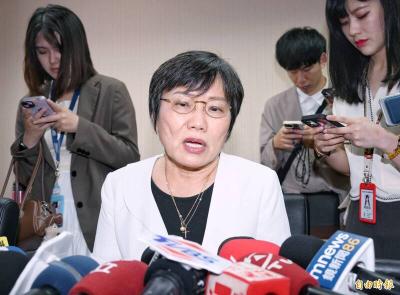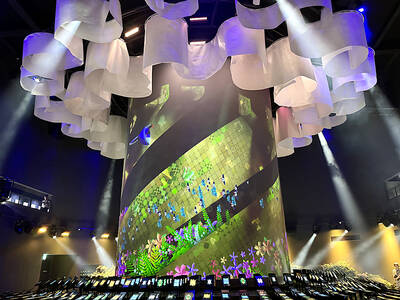The nation’s junior high school students spend too much at school at the expense of personal time, a group of educators said yesterday, warning that excess study hours have adverse effects on a student’s cognitive and interpersonal development.
The Humanistic Education Foundation (HEF) yesterday released the results of a poll surveying 1,433 junior high schools students at 229 schools. Of the students, 81 percent spent more than 45 hours at school each week.
That means students put in more hours than the maximum work week set by the Council of Labor Affairs, the foundation said, adding that Taiwanese students spent twice as much time at school than their peers in Europe and the US.
“Prolonged study hours have zero benefits on a student’s ability to learn. Moreover, students have less time for an adequate sleep and leisure activities. The pressure that students face is no different now from what they faced 15 years ago,” HEF president Shih Ying (史英) said.
The foundation advocates a “3-8 plan” in which eight hours of a student’s day are spent on schoolwork and eight on sleeping, leaving another eight for leisure time.
The group also said many schools had unbalanced curriculums, sacrificing electives to make students put more hours into subjects like math and science.
More than 57 percent of the schools polled did not offer a well-rounded curriculum as required by law and at least 76 percent regularly allowed teachers of Chinese, math and English to take time from students’ physical education and art classes for extra lessons.
Mental health expert Teng Hui-wen (鄧惠文) said the junior high school period marks the most formative years for teenagers because it is a crucial time to develop independent and critical thinking.
The “fill-in-the-blanks” teaching method impedes a student’s intellectual growth, Teng said.

Chinese Nationalist Party (KMT) Chairman Eric Chu (朱立倫), spokeswoman Yang Chih-yu (楊智伃) and Legislator Hsieh Lung-chieh (謝龍介) would be summoned by police for questioning for leading an illegal assembly on Thursday evening last week, Minister of the Interior Liu Shyh-fang (劉世芳) said today. The three KMT officials led an assembly outside the Taipei City Prosecutors’ Office, a restricted area where public assembly is not allowed, protesting the questioning of several KMT staff and searches of KMT headquarters and offices in a recall petition forgery case. Chu, Yang and Hsieh are all suspected of contravening the Assembly and Parade Act (集會遊行法) by holding

PRAISE: Japanese visitor Takashi Kubota said the Taiwanese temple architecture images showcased in the AI Art Gallery were the most impressive displays he saw Taiwan does not have an official pavilion at the World Expo in Osaka, Japan, because of its diplomatic predicament, but the government-backed Tech World pavilion is drawing interest with its unique recreations of works by Taiwanese artists. The pavilion features an artificial intelligence (AI)-based art gallery showcasing works of famous Taiwanese artists from the Japanese colonial period using innovative technologies. Among its main simulated displays are Eastern gouache paintings by Chen Chin (陳進), Lin Yu-shan (林玉山) and Kuo Hsueh-hu (郭雪湖), who were the three young Taiwanese painters selected for the East Asian Painting exhibition in 1927. Gouache is a water-based

Taiwan would welcome the return of Honduras as a diplomatic ally if its next president decides to make such a move, Minister of Foreign Affairs Lin Chia-lung (林佳龍) said yesterday. “Of course, we would welcome Honduras if they want to restore diplomatic ties with Taiwan after their elections,” Lin said at a meeting of the legislature’s Foreign Affairs and National Defense Committee, when asked to comment on statements made by two of the three Honduran presidential candidates during the presidential campaign in the Central American country. Taiwan is paying close attention to the region as a whole in the wake of a

OFF-TARGET: More than 30,000 participants were expected to take part in the Games next month, but only 6,550 foreign and 19,400 Taiwanese athletes have registered Taipei city councilors yesterday blasted the organizers of next month’s World Masters Games over sudden timetable and venue changes, which they said have caused thousands of participants to back out of the international sporting event, among other organizational issues. They also cited visa delays and political interference by China as reasons many foreign athletes are requesting refunds for the event, to be held from May 17 to 30. Jointly organized by the Taipei and New Taipei City governments, the games have been rocked by numerous controversies since preparations began in 2020. Taipei City Councilor Lin Yen-feng (林延鳳) said yesterday that new measures by